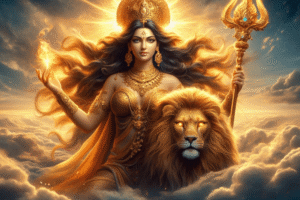Fire as a Therapeutic Element
From Hippocratic medicine and the fire-wielding gods of Greece, to Agni in India and Xiuhtecuhtli in Mesoamerica, the Fire element symbolizes transformation, vitality, and illumination. In Traditional Chinese Medicine, Fire governs the heart and small intestine, the emotional and physical core of health. Through food, herbs, colors, scents, and mindful practices, we can awaken the balancing power of Fire within us, supporting both energy and joy.
The Fire Element in Hippocratic Medicine
Hippocrates taught that health depends on the harmony of the four humors:
Blood → Air
Phlegm → Water
Black bile → Earth
Yellow bile → Fire
Fire, linked to yellow bile, represented heat, energy, and transformation.
When in balance:
The body radiates vitality and strong digestion.
The spirit is courageous, motivated, and focused.
When imbalanced:
Excess Fire could cause anger, inflammation, fevers, or ulcers.
Deficient Fire could lead to fatigue, coldness, or lack of passion.
Fire and Healing in Ancient Greece
For the Greeks, Fire was sacred—both destructive and purifying. Healing sanctuaries often included ritual flames and light to symbolize cleansing and divine energy.
Fire Deities in Greek Mythology
Hephaestus, god of fire and the forge, embodied craftsmanship and transformation. But in healing contexts, Hestia, goddess of the hearth fire, was equally important—her flame symbolized warmth, nourishment, and home as a source of stability and renewal.
The Fire Element in Chinese Medicine
In Traditional Chinese Medicine (TCM), Fire is one of the five elements (alongside Earth, Water, Wood, and Metal). It governs the heart and small intestine, as well as the pericardium and triple burner (san jiao). Fire represents joy, spirit (Shen), and circulation.
When balanced:
The heart beats harmoniously, with good circulation.
The mind feels clear, passionate, and joyful.
Emotional warmth strengthens relationships and vitality.
When imbalanced:
Excess Fire: anxiety, insomnia, restlessness, palpitations, high blood pressure.
Deficient Fire: low energy, depression, lack of joy, weak circulation.
Fire Element and Healing
Fire embodies energy, passion, and transformation. It fuels digestion, powers the heart, and lights up consciousness. Cultivating Fire energy means balancing activity with rest, passion with calm, and intensity with grounding practices.
Colors, Smells, and Practices to Support the Body’s Fire Element
Colors: Red, orange, and bright yellow resonate with Fire’s warmth and vibrancy.
Smells: Spicy, warm, and stimulating scents like cinnamon, clove, frankincense, and myrrh awaken Fire energy.
Practices & Meditation:
Sun meditation: focusing on the warmth of sunlight to absorb energy.
Dynamic movement such as dancing, martial arts, or vigorous yoga to circulate Fire energy.
Breathwork techniques emphasizing energizing, fast breathing.
Candle gazing meditation (Trataka) for concentration and inner focus.
Foods, Herbs, and Oils that Support the Fire Element
Foods:
Spices: chili, ginger, garlic, mustard seeds
Brightly colored fruits and vegetables: tomatoes, peppers, carrots, oranges
Bitter greens: arugula, dandelion greens
Warm teas: hibiscus, rooibos
Herbs & Oils:
Herbs: cayenne, ginseng, rosemary, turmeric
Essential oils: cinnamon, clove, frankincense, rosemary



Fire Goddesses and Deities in World Mythology
Hestia – Greek Goddess of the Hearth
Hestia represented the eternal flame at the center of Greek homes and temples. Her fire symbolized nourishment, stability, and healing warmth.
Agni – Vedic God of Fire (India)
In Hindu tradition, Agni is the divine messenger who carries offerings to the gods through fire. Fire rituals (yajna) symbolized purification, transformation, and healing.
Xiuhtecuhtli – Aztec God of Fire
In Mesoamerica, Xiuhtecuhtli was the fire god of life, warmth, and renewal. Associated with volcanoes and the hearth, he represented vitality, protection, and longevity.
Mama Nina — Andean Goddess of Fire
Mama Nina (Quechua for "Mother of Fire") is recognized as the goddess of light, fire, and volcanoes in Inca cosmology. She’s one of the "elemental mothers," along with Pachamama (Earth), Mama Qucha (Water), and Mama Wayra (Wind) Βικιπαίδεια
Mama Nina continues to be invoked in modern Andean spiritual practices, especially in rituals involving ceremonial fire, mountain offerings, or solstice celebrations—highlighting her enduring presence in Andean culture
The Fire Element Q&A’s
1. What does the Fire element symbolize in Hippocratic medicine?
It was linked to yellow bile, representing energy, heat, and transformation.
2. Which deities represent Fire in mythology?
Hestia in Greece, Agni in India, and Xiuhtecuhtli among the Aztecs.
3. How is the Fire element understood in Chinese medicine?
It governs the heart and small intestine, and represents joy, circulation, and spirit (Shen).
4. How does the Fire element support healing?
It fuels digestion, circulation, passion, and vitality, while supporting emotional warmth.
5. What foods strengthen the Fire element?
Spicy foods, brightly colored vegetables, and warming teas.
6. Which herbs and oils are good for the Fire element?
Cayenne, ginseng, turmeric, cinnamon, and frankincense oil.
7. What colors and smells balance the Fire element?
Red, orange, and gold colors, combined with spicy, warming scents.
References / Bibliography
Hippocrates. On the Nature of Man. Translations and studies on the four humors and elements.
Jouanna, J. (1999). Hippocrates. Johns Hopkins University Press.
Kaptchuk, Ted J. The Web That Has No Weaver: Understanding Chinese Medicine. McGraw-Hill, 2000.
Unschuld, P. (1985). Medicine in China: A History of Ideas. University of California Press.
Burkert, W. (1985). Greek Religion. Harvard University Press.
Vlachou Panagiota Sophia
Certified Beekeeper | Specializing in Traditional Beekeeping & Natural Wellness Methods
Trained in Traditional Acupuncture – Academy of Traditional & Chinese Medicine
Member of the Beekeepers’ Association of Attica-Greece
Disclaimer: This article is for educational and informational purposes only. It is not intended to diagnose, treat, cure, or prevent any disease, and it does not substitute professional medical advice. Always consult a qualified healthcare professional before making any changes to your diet, lifestyle, or health practices.


